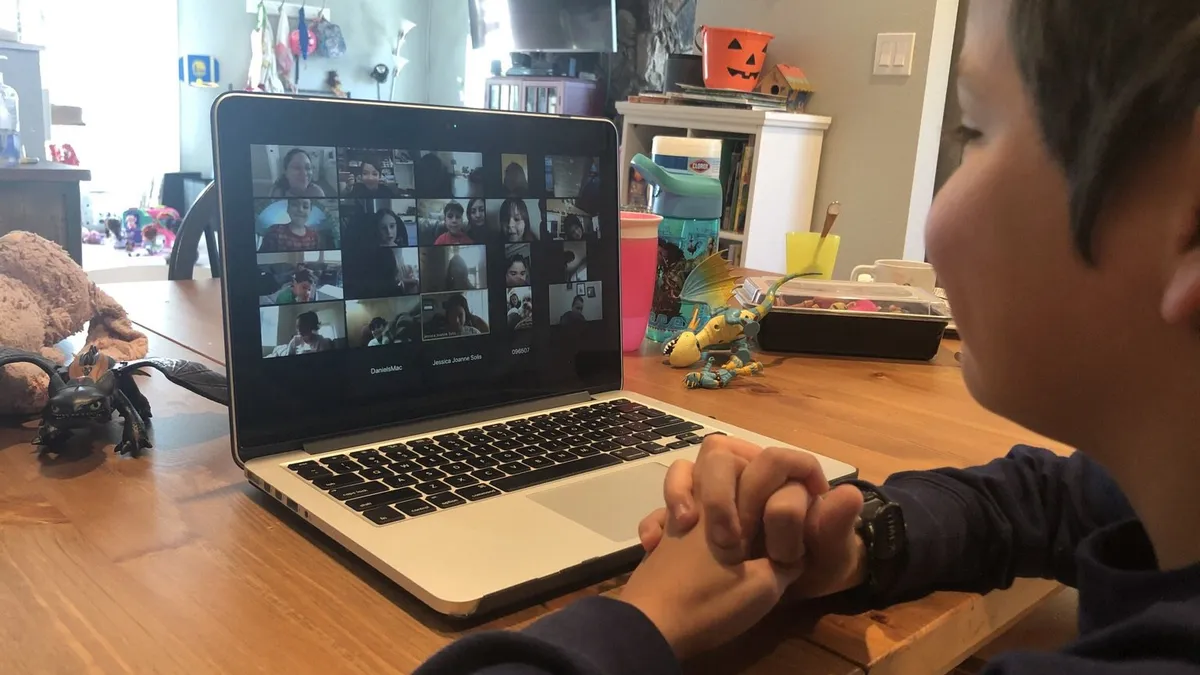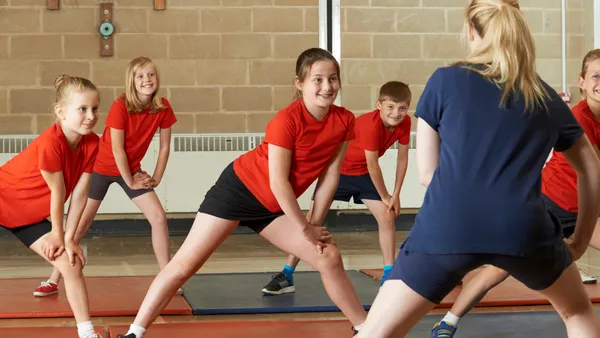Dive Brief:
- As schools look to the fall and how classes will operate, creating a structure for students to safely express their feelings will help them feel supported, Sara LaHayne, founder of Move This World, a social-emotional learning program for pre-K-12 educators and students, writes for Edutopia. Whether students will be in a classroom, a distance learning environment or a hybrid of the two, there are steps educators can take to help them work through their feelings.
- LaHayne writes one step is to allow students to express feelings any way they choose — even by drawing a picture — and then thank them for sharing. Educators should also consider watching news with students so they can ask questions and get immediate feedback.
- Meanwhile, educators may want to mirror routines from the classroom in a remote space, like a good morning message, and focus on positive things still happening in the world. Finally, teachers should remember that in order to help their students, they need to ensure they’re also taking care of themselves.
Dive Insight:
Structure is important for young learners. That can come in many forms, from school administrators building a snack time young children can count on every day, to educators creating opportunities where students can set their own structure, like picking a group for a project or prioritizing tasks to finish an assignment.
Unstructured time is also important, as ensuring young children have time for play also helps foster creative and critical thinking. Yet unstructured and structured activities don’t have to be exclusive. They can be woven successfully together to help foster social skills, as demonstrated by the path taken at Eliza Chappell Elementary School in Chicago, which used recess as a way to help students develop resilience and conflict resolution skills.
These opportunities can also present an opportunity for students to develop executive function, such as keeping track of time and learning how to finish one task — like a game or puzzle — before moving on to another.
Even a game of tag requires students to handle group dynamics, and a creative project, such as constructing a building from popsicle sticks, will involve course corrections where children try one step and likely have to make changes along the way. Executive function is crucial enough that researchers found kindergartners who have gaps in this area may have difficulties later in their academic learning, particularly in math, according to a 2019 study.
The ability to connect with others, the focus to stay the course, and the insight to evaluate a task and make adjustments to better their work are all tools that will support students not only in their education, but as they graduate into the next phase of their life.














